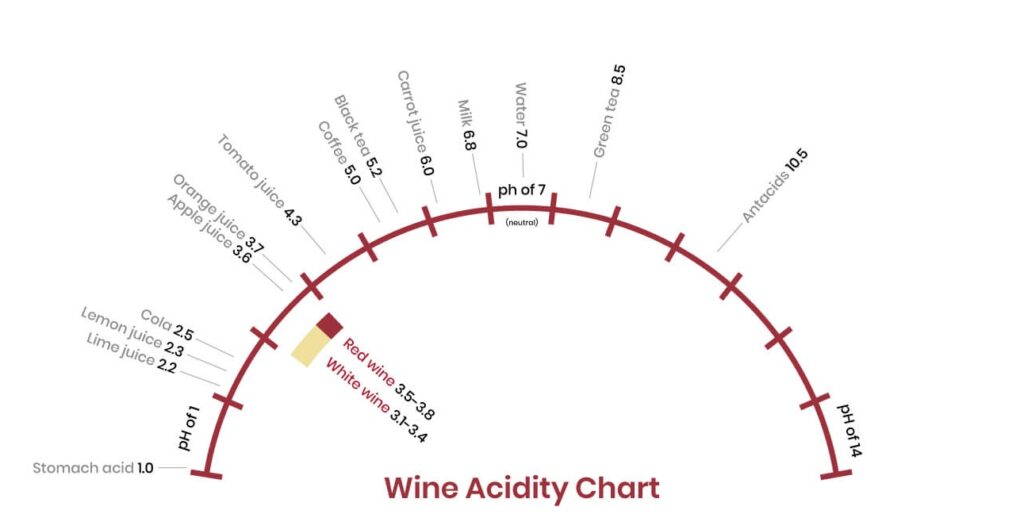The best wines are in balance among the main four character traits:
Tannin
Alcohol
Sweetness
Acidity
There are several kinds of acids in wines. The most common ones are tartaric acid, lactic acid, and malic acid. Tartaric acid is the most important. It affects the taste, color and aroma of the final product. Ever heard someone ask if a wine has undergone malolactic fermentation or “malo”? It’s the process in winemaking where malic acid is converted to lactic acid, which makes the wine a bit “smoother” and lessens the tart taste.
Overall, acidity affects the taste, the structure and the stability of wine – and is the key contributing factor to the length of the finish in a wine.
Taste:
If you have a high acid wine, it will taste crisper and more tart. A low acid wine will feel smoother and rounder on the palate.
Structure:
White wines can be said to be built on a spine of acidity. Red wines have acid as well, but their structure is due more to tannins.
Stability:
Acid works as a preservative by protecting the wine from bacteria. It is essential for long aging.
Other:
Acidity is often described as giving wine its freshness and energy. A wine low in acidity can be described as flabby or flat.
Basically, acidity gives wine its tart and sour taste. It gives you that puckering sensation akin to what you experience when drinking lemonade. Broadly speaking, less puckering means less acid in the wine and more puckering means a higher level of acid in the wine.
As you may know from your high school chemistry class, there is a pH spectrum that goes from acidic to basic. Wines are typically about 2.9-4.2. Also, it’s important to remember that the pH scale is logarithmic not arithmetic. So this means that a 2.5 pH wine is 10 times more acidic than a 3.5 pH wine. Our wines tend to fall in a range from a pH of 3.4 to 3.6. That’s a very healthy acidity for wines.
Acidity in wine is affected by climate. When grapes have not yet begun to ripen, they are very high in acidity. As they ripen, the acidity decreases and the sweetness from the sugars increases. This is why the diurnal swing (the difference between the daytime high temperature and the overnight low temperature) that we experience in Paso is so important. During the growing season, we can have diurnal swings of as much as 50°. The daytime high can hit 95° while the overnight low can reach 45°. Transporation of acidity arrests at temperatures below 52°. This means that the grapes stop losing acidity during our cool nights, and also do not increase in sugar at this time as sunlight is what creates sugars in grapes. This enhances the ability for us to pick our grapes when they are just sweet enough, ripe, and yet still possess the acidity it takes to make a great wine.
At Sixmilebridge we are blessed with fruit with plenty of acidity. We’ve never had to add acid to our wine. It’s among the reasons our wines express freshness and energy, accompanied by deep color, good structure, and plenty of age-worthiness.
Sláinte,

